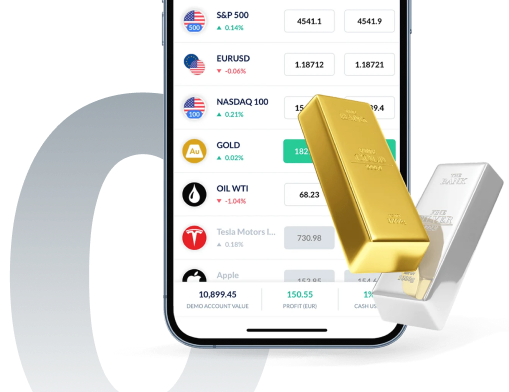Access 1,200+ global CFDs instruments.
Access a plethora of trading opportunities across the financial markets.

Access 1,200+ global CFDs instruments.
Access a plethora of trading opportunities across the financial markets.

Have you ever wondered how traders and investors assess their performance throughout the year? The term Year-to-Date (YTD) is essential in this context. YTD serves as a financial metric that evaluates the performance of an investment or portfolio from the beginning of the year up to the current date. In this article, we'll delve into the fundamentals of YTD and its importance for traders and investors alike.
What is Year-to-Date (YTD)?
Year-to-date (YTD) is a critical financial concept that enables traders and investors to monitor the performance of an investment or portfolio starting from January 1st of the current year until the present day. It provides a clear view of how an investment has performed over this specific timeframe.
To compute YTD as an investor or trader, you must determine the cumulative return or the percentage of gain/loss from your investment activities since the year's start. The formula to calculate YTD return is:
YTD return = ((Current value - Initial value) / Initial value) × 100
Example with Apple Inc. (AAPL.US):
Consider a trader who invested $50,000 in Apple stock on January 1st. By December 27th, the value of this investment has risen to $60,000.
Using the YTD return formula:
YTD return = ((60,000 - 50,000) / 50,000) × 100 = 20%
Thus, the YTD return for the Apple investment as of December 27th stands at 20%, indicating a 20% increase in value since the year began.
Practice with a Demo Account
Try our demo account and experience real market conditions.

The importance of YTD for traders
YTD is a vital tool for traders as it offers insights into the returns generated by specific securities over a defined period. By analyzing the YTD metrics, traders can evaluate whether a security is performing well and decide whether to retain or sell their investments. Additionally, YTD assists traders in monitoring their overall financial performance, enabling them to make necessary adjustments to optimize their portfolios.
What's your Trading Style?
No matter the playing field, knowing your style is the first step to success.

FAQs
1. What does Year-to-Date (YTD) mean in trading?
YTD represents the duration from the start of the current year to the present date. It allows traders to assess the performance of their investments or portfolios over a particular timeframe.
2. Why is YTD crucial for traders?
YTD is significant as it offers a comprehensive perspective on investment performance during a specified period. This metric aids traders in evaluating their strategies, tracking progress, and making informed decisions based on performance data.
Trade Demo: Real trading conditions with zero risk
Trade risk-free on Skilling’s award winning platforms with a 10k* demo account.

3. How can traders calculate Year-to-Date (YTD) returns?
To calculate YTD returns, traders can use the formula:
YTD return = ((Current value - Initial value) / Initial value) × 100
This formula provides the percentage return based on the difference between the current and initial investment values.
4. What does a positive YTD return signify for traders?
A positive YTD return indicates that the trader has realized a gain in the investment's value during the specified timeframe. It suggests successful trading strategies leading to a profitable outcome.
5. What does a negative YTD return imply for traders?
A negative YTD return indicates that the trader has experienced a loss in investment value over the specified period. This suggests that their trading strategies may not have been effective, resulting in decreased portfolio value.
6. How can traders leverage YTD to assess their performance?
Traders can use YTD to evaluate performance by comparing their returns to benchmarks or industry averages. This comparison helps them determine if they have outperformed or underperformed the market, offering insights into the effectiveness of their strategies.
What's your Trading Style?
No matter the playing field, knowing your style is the first step to success.

7. Can YTD be used to predict future performance?
While YTD alone is not sufficient for accurate future predictions, analyzing trends and patterns in YTD returns over multiple years can provide insights into the consistency and potential future performance of investments.
8. Is YTD the sole metric traders should focus on?
No, YTD is just one of several metrics traders should consider. Other crucial factors include overall portfolio performance, risk management, diversification, and specific trading goals or benchmarks.
9. What distinguishes YTD from a 1-year return?
The Year-to-Date (YTD) return measures performance from the beginning of the current year to the present date. In contrast, a 1-year return assesses performance over a complete year, irrespective of when the investment was made. While YTD offers a snapshot of performance up to the current date, the 1-year return provides a broader view over a fixed 12-month span.











